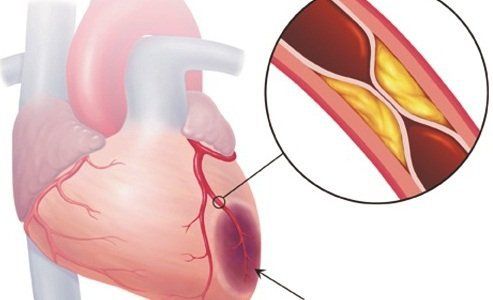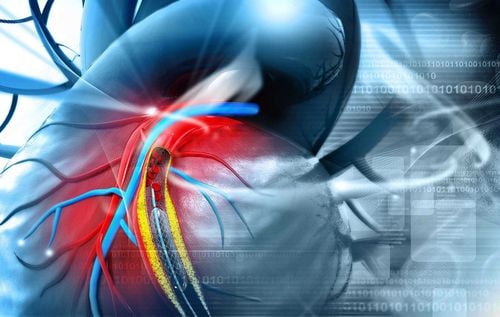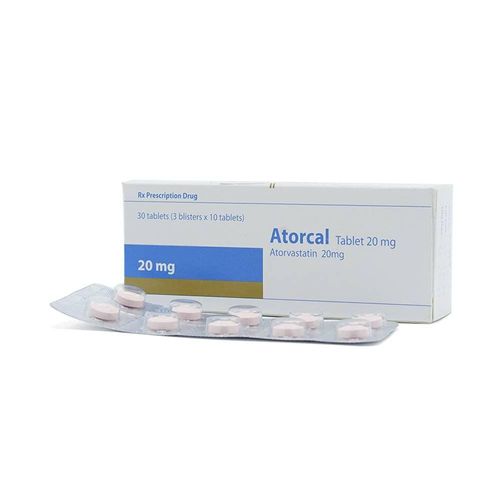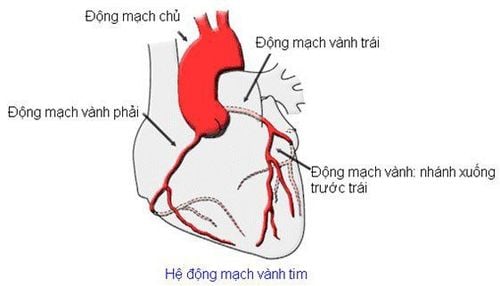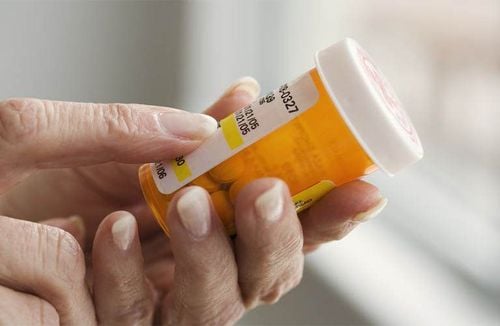This is an automatically translated article.
The article is professionally consulted by Interventional Cardiologists, Department of Medical Examination & Internal Medicine, Vinmec Hai Phong International General Hospital.Coronary angiography is a procedure that uses X-rays to view the blood vessels of the heart by identifying the dye injected into the blood vessels. If necessary, the doctor can intervene to open blocked heart arteries during the coronary angiogram. Where to check the coronary artery and the cost of coronary angiography is a big concern of many patients. In many hospitals, Vinmec is the first choice for coronary angiography thanks to many outstanding advantages.
1. Why have coronary angiography?
Coronary artery disease is one of the diseases with the highest mortality rate among cardiovascular diseases. If the disease is not detected early and treated promptly, the disease progresses to dangerous conditions such as complete blockage of the lumen, myocardial necrosis or other cardiovascular complications.
Coronary angiography is a procedure to determine the condition of the coronary arteries, thereby helping to diagnose coronary artery diseases. Coronary angiography technique is carried out with the use of specialized catheters to introduce contrast material into the coronary artery lumen, thereby displaying the image of the coronary artery system on the bright screen, based on the This image allows to evaluate the lesions of the coronary artery system such as stenosis, occlusion, dissection, thrombosis...
2. When is coronary angiography needed?

Khi nào cần chụp mạch vành?
Patients are prescribed coronary angiography by the doctor in the following cases:
Acute myocardial infarction with ST elevation. Unstable chest pain and non-ST-elevation myocardial infarction. Stable angina: Coronary angiography to consider intervention when non-invasive investigations show high risk or large areas of myocardial ischemia, or the patient has not been controlled by optimal medical therapy. proof. May be indicated in patients with suspected coronary artery disease or known coronary artery disease. Coronary angiography to check before heart surgery, large blood vessels in the elderly (men > 45; women > 50). Coronary angiography checks before noncardiac surgery in patients with suspected coronary artery disease. After the emergency, the circulation stopped outside the hospital. Chest pain that recurs after coronary intervention or after surgery for aortic-coronary bypass. Heart failure of unknown cause. Coronary angiography checks for coronary artery abnormalities when there are abnormalities on multi-segment computed tomography of the coronary arteries. Patients with dangerous arrhythmias (ventricular tachycardia, atrioventricular block, .. .). Some other special cases (occupation, high-risk lifestyle; combination of other exploration,...). The downside of this technique is that there can be some risks and complications such as dissection when the doctor has to insert the tube through the groin, hand or elbow to enter the coronary artery. Therefore, coronary angiography needs to be done by skilled doctors, and it is also necessary to carefully learn where the best coronary angiography should be. Vinmec International General Hospital system is a reliable address for patients to choose.
3. Preparation before coronary angiography at Vinmec
Do not eat or drink for 8 hours before coronary angiography; Have the patient's relative to sign the consent form during and after coronary angiography. Patients should ask someone to stay with them the night after the test, as the patient may feel dizzy or not alert for the first 24 hours after the coronary angiogram; The nurse measures blood pressure, sets up an intravenous line, does the necessary tests; Tell your doctor if you are allergic to seafood, have had a bad reaction to contrast dye, are taking Sildenafil (Viagra), or if you are pregnant.

Không nên ăn hoặc uống trong vòng 8 giờ trước khi chụp động mạch vành
4. Coronary angiography procedure at Vinmec
Time to perform coronary angiography lasts about 30 - 45 minutes. During the procedure, the patient lies supine on the X-ray table, with a seat belt fastened to the chest and legs. The X-ray machine can be moved back and forth, around the patient's head and chest to take pictures from many different angles.
Patients are monitored blood pressure, electrocardiogram, blood oxygen throughout the scan. Your doctor will give fluids into a vein in your arm, and you may be given intravenous sedation as well as other medications and fluids to help you relax. At that time, the patient will be very sleepy and may fall asleep during the procedure, but can still wake up easily to follow any instructions given by the doctor.
The hair on the patient's arm or groin is shaved off at the site where the flexible cannula (catheter) is inserted, the area is cleaned, disinfected, and anesthetized with a local anesthetic injection. The doctor then makes a small incision where the catheter was inserted, then the catheter is inserted into a blood vessel and carefully threaded into the heart or coronary artery.
The catheterization is painless and the patient usually will not feel the tube moving through the body. Tell your doctor or nurse right away if you feel any discomfort.
Then the dye is injected into the body through the catheter. The patient may experience a burning or burning sensation. Tell your doctor or nurse right away if you feel any pain or discomfort.
The dye is easily seen on X-ray images. As the medication moves into the blood vessels, your doctor will observe the flow of the medication and identify any blockages or restricted circulation areas. Depending on what the doctor finds during the angiogram, the patient may have additional catheterization procedures such as angioplasty or stenting to widen the narrowed artery.
After the scan is complete, the catheter is removed from the arm or groin and the incision is closed with compression such as a clamp or small plug. The patient will be taken to the recovery room for observation and monitoring until the condition is stable, then the patient will return to the room for regular monitoring.
5. Follow-up after coronary angiography at Vinmec
Patient should relax, drink plenty of fluids, do not smoke or drink alcohol immediately after the procedure. The doctor will remove the bandage after 24 hours, if the patient's wound is oozing, apply a new bandage for another 12 hours.
During the first 2 days after coronary angiography, the patient should not have sex or perform heavy exercise. In addition, the patient should not take a bath in the jacuzzi or pool, and do not apply lotion near the puncture site for 3 days.
After 1 week of coronary angiography, the patient needs to come back to the doctor to review the condition and discuss with the doctor for more information about the disease.

Bệnh nhân không nên uống rượu hay hút thuốc ngay sau khi thực hiện thủ thuật
6. Why should coronary angiography at Vinmec Hospital?
People with coronary artery disease can choose to have coronary angiography at Vinmec International General Hospital. There is a team of Cardiologists, including Professors, Doctors, Specialist 2 doctors, Masters with experience, great reputation in the field of medical treatment, surgery, interventional cardiac catheterization. . Vinmec also focuses on applying advanced techniques in the diagnosis and treatment of cardiovascular diseases, using a system of modern medical equipment that meets international standards.
In addition, Vinmec also has professional cooperation with prestigious medical units in the world, constantly consolidating and improving its expertise in medical examination and treatment.
Please dial HOTLINE for more information or register for an appointment HERE. Download MyVinmec app to make appointments faster and to manage your bookings easily.




